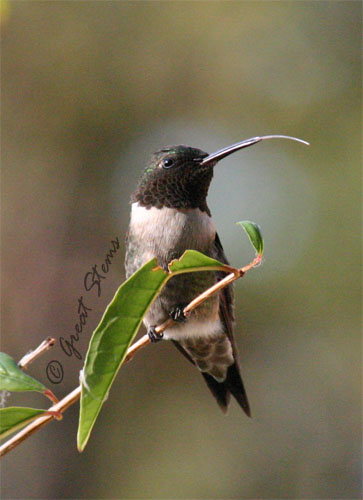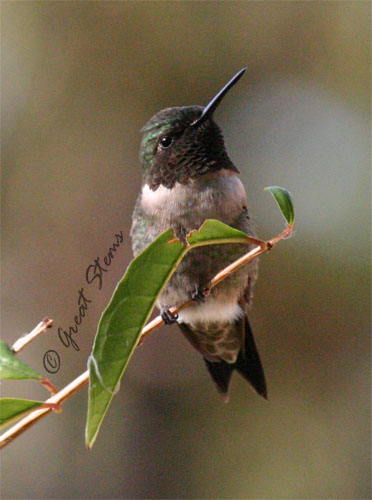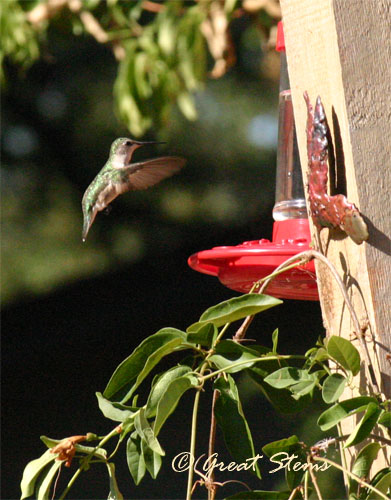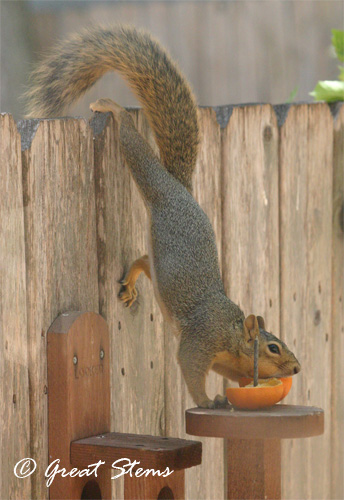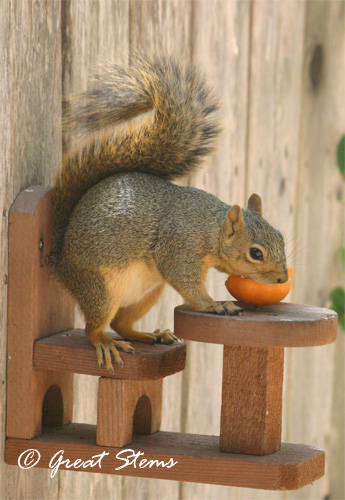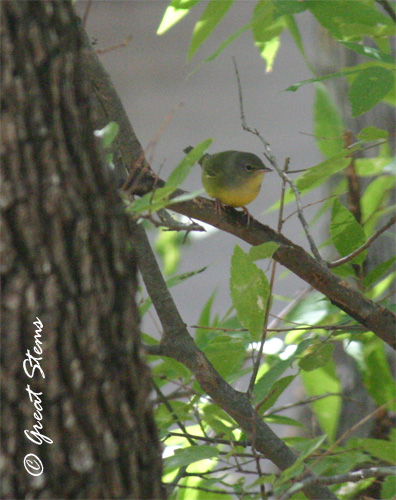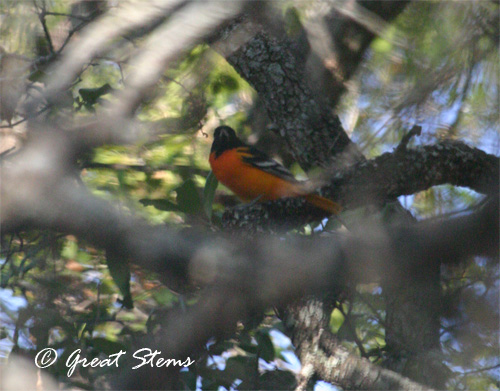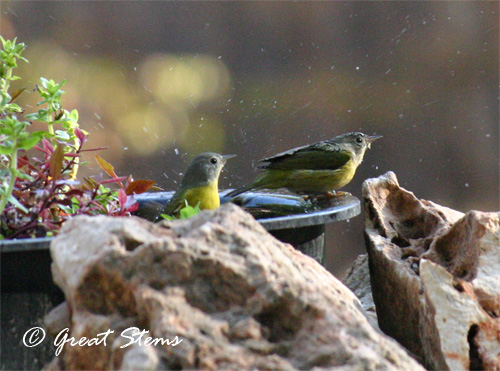
I’ve come to realize that our backyard pond is one of our greatest assets. From the get-go, it’s been a wildlife attractor — the sound of the waterfall has called to toads, frogs, birds, dragonflies, and the like. But the raised pond, formerly someone’s discarded hot tub, also provides a type of wildlife protection that regular in-ground ponds don’t.
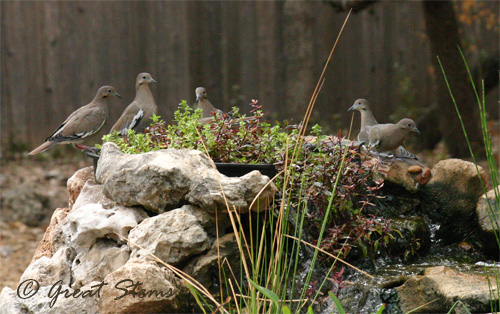
It is a pond with a view, allowing birds and other creatures to drink safely while avoiding ambush. Furthermore, the deeper water stays cool in the hot summer, and we have minimal evaporation (as well as minimal maintenance) all year long. Win-win!
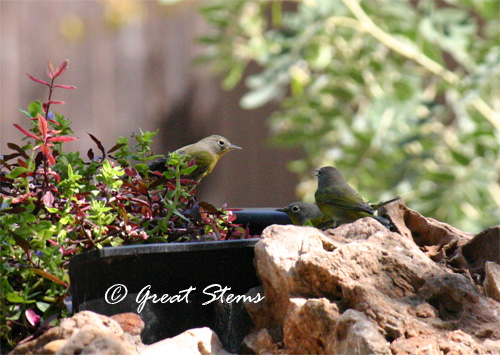
Nashville Warblers
Granted, it’s migration season right now, but I’ve never seen so many birds in our yard all at one time. I’m saving hummingbird photos for the next post, because the warblers have me obsessed right now — not that I don’t love my little hummingbirds, but they got the attention last time!
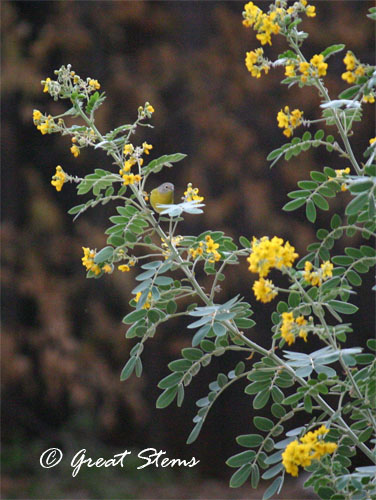
Can you spot the Nashville Warbler in the Lindheimer’s Senna?
So far I’ve seen at least four warbler species, and at least a couple of vireos. The Nashville Warblers are the most numerous. They have an insect buffet in the Lindheimer’s Senna and nearby plants, and then they move over a few feet to have a (cool-water) hot-tub party.
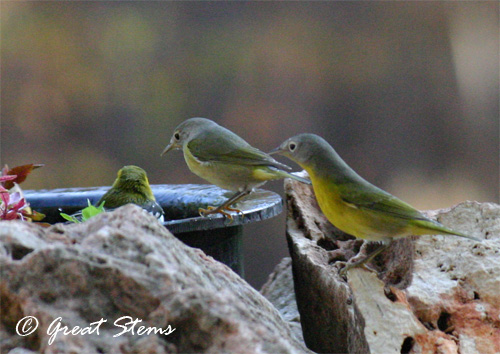
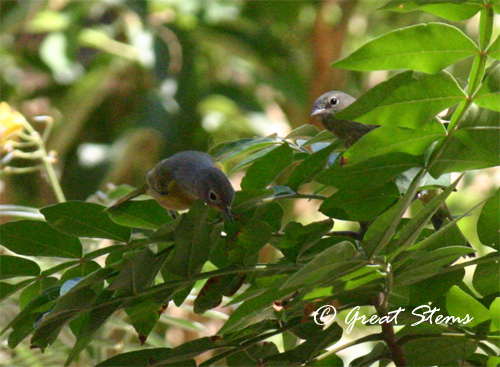
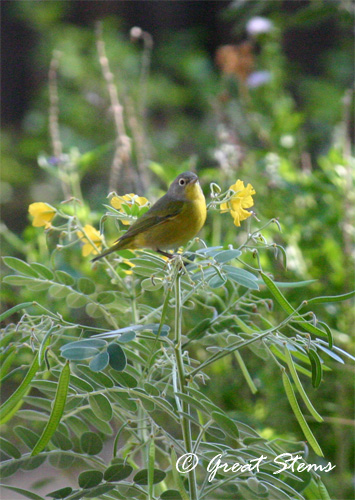
Sometimes they invite friends.
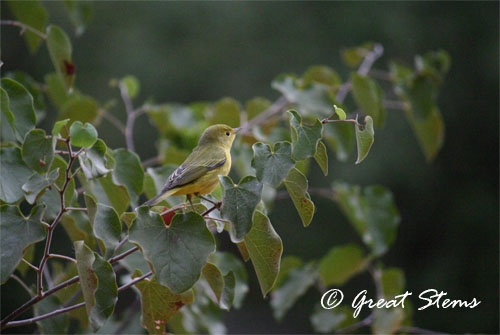
Yellow warbler, maybe?
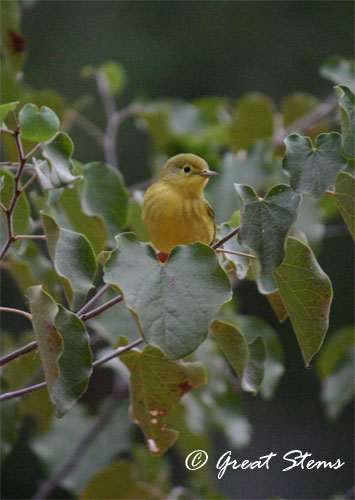
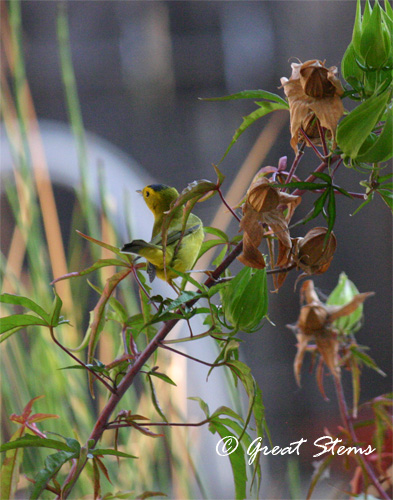
Wilson’s Warbler
How about a size comparison?
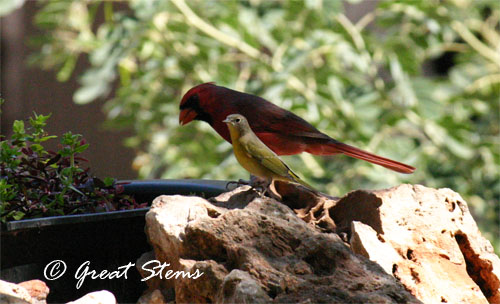
Seeing a warbler in the trees can be very misleading — they are much smaller than one might realize. Since most of us know cardinals, and because a cardinal and warbler both decided to pose for me in a moment of gracious cooperation, let’s compare. A Northern Cardinal is about 21-23 cm long and 42-48 g, while the Nashville Warbler is about 10-12 cm long and weighs a mere 7-12 g. That the cardinal is considered “mid-sized” is plainly obvious in the image.
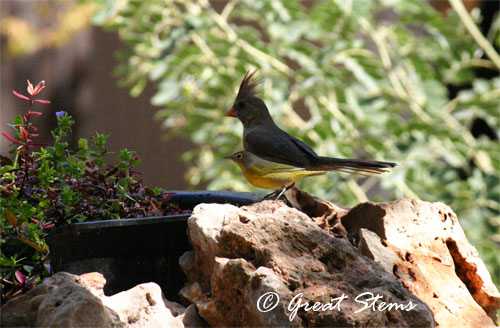
A female cardinal then took a turn as a model. For whatever reason, the lady Cardinals have all had their crest feathers in a pronounced up-do lately. Did they all go to the same salon?
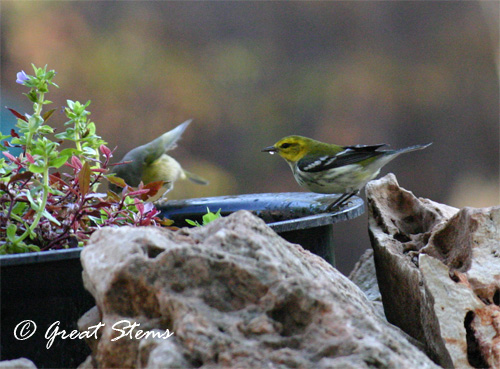
Black-Throated Green Warbler?
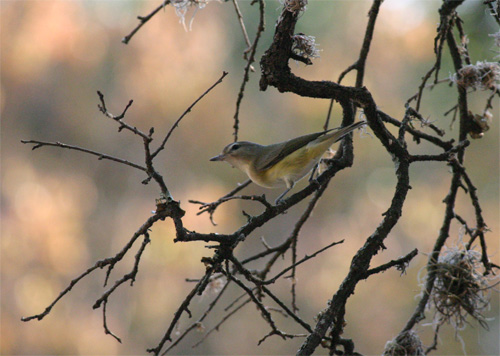
Hmmm — this one has me stumped. Could it be a Warbling Vireo, maybe?
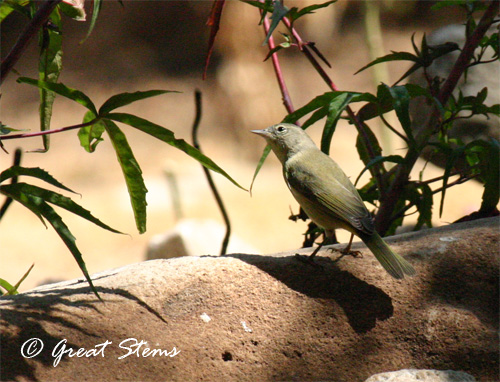
Likewise, here.
At least I know this next one, a Bewick’s Wren. Seemed less skittish than my Carolina Wrens, so I got far more Bewick’s pictures in 2 minutes than I’ve ever gotten of all my Carolinas put together (not including babies in a nest that couldn’t fly away from my camera). I’ll just show one, though.
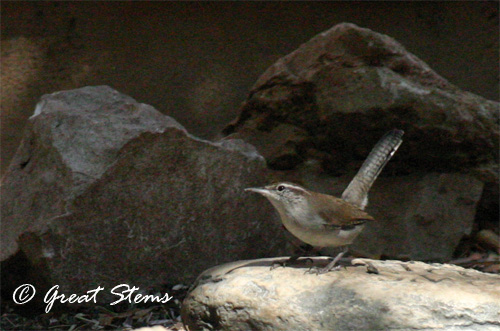
I just love watching the way wrens look for insects in their very efficient, no-nonsense manner.
Other new visitors to the garden have been a White-Eyed Vireo, a Blue-Gray Gnatcatcher, a Broad-Winged Hawk, and another much more speckled hawk that the Blue Jays aggressively chased away, but all I have to show for all of them is one rather sucky picture of the gnatcatcher that I’m not bothering to post (actually, several very, very sucky pictures of the gnatcatcher, with only one picture slightly less sucky than the rest). Needless to say, you get nada, zero, zip.
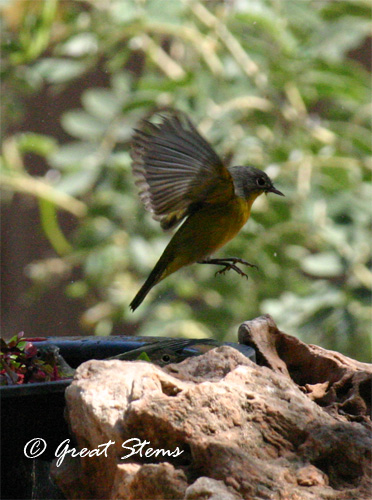
But I promise to hop out there to try again.
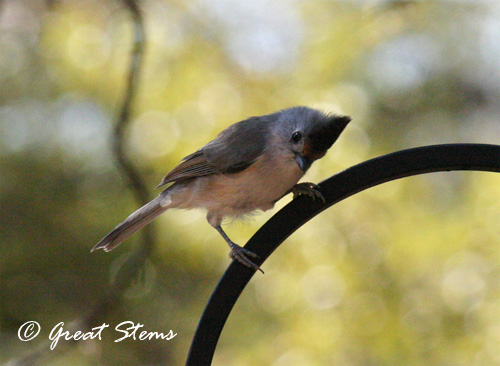
Black-Crested Titmouse
Enough chattering! Get back to work!
